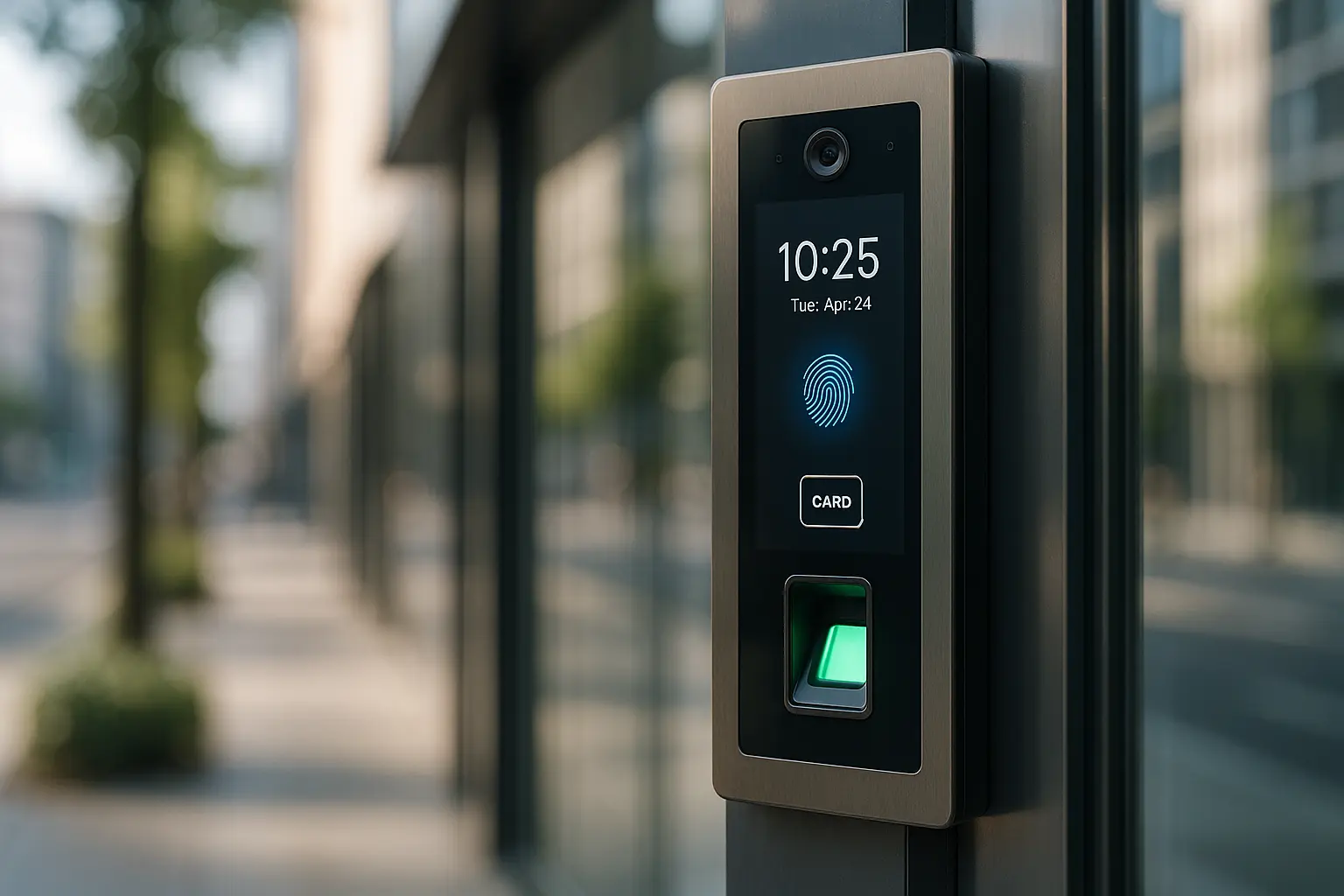In the rapidly evolving landscape of technology, our doors are no longer just barriers to entry. They have become interactive systems that redefine how we perceive security and manage access. Smart access systems have revolutionized the way we think about personal safety and convenience, merging the realms of the physical and the digital. With the seamless integration of mobile technology and cloud solutions, our very doorways have become symbols of modern ingenuity, offering customizable, secure, and efficient control over who enters our spaces. Let’s explore this wondrous world of smart locks and the systems that make them tick.
The Anatomy of Smart Access Systems
Smart access systems are technology-driven solutions designed to provide secure, efficient, and user-friendly access to buildings and spaces. Unlike traditional locks that rely on physical keys, these systems leverage digital credentials, often managed via mobile apps or web-based platforms.
Components of a Smart Access System
- Digital Locks: The heart of any smart access setup, these locks can be controlled remotely or through proximity detection, allowing entry without the need for traditional keys.
- Mobile Technology: Most smart systems utilize apps that allow users to manage, monitor, and control access from anywhere in the world. It’s like having a control room in your pocket.
- Cloud-Based Management: Secure, cloud systems store credentials and access logs, ensuring that data is always available, backed up, and safe from physical loss or theft.
- Time-Based Keys: Temporary or permanent digital keys can be issued to guests, employees, or service providers, allowing controlled access for specific periods.
- Credential Options: From biometric data to RFID cards, the variety of credentials is vast, catering to diverse needs and preferences.
Why Opt for Smart Access?
Smart access solutions offer secure, flexible, and modern alternatives to conventional locks. With enhanced features and control, these systems cater to the demands of today’s dynamic lifestyles, offering peace of mind and unmatched convenience.
Unlocking the Potential of Mobile Technology
One of the most significant advancements in smart access systems is the integration of mobile technology. Our smartphones have become the ultimate universal key, offering unparalleled convenience and control over our environments.
The Power of Apps
- Remote Access: Whether you’re at work or on vacation, mobile apps allow you to lock or unlock doors, manage access, and receive real-time notifications about entry attempts.
- Customization: Create personalized access schedules, revoke or grant entry instantly, and monitor usage logs, all from the palm of your hand.
Enhancing Security with Mobile Tech
- Real-Time Alerts: Stay updated with alerts for any unauthorized entry, ensuring that you’re always aware of who is accessing your property.
- Two-Factor Authentication: Boost security by requiring secondary verification for an added layer of protection.
Convenience Meets Control
With mobile technology, we’re no longer bound by the limitations of physical keys. The brilliance of smart access systems lies in their ability to merge convenience with control, empowering users to manage entry with a simple tap or swipe.
Cloud-Based Solutions: The Future of Access Management
The cloud has transformed the way we store, manage, and retrieve data, and smart access systems are no exception. By shifting away from localized systems to cloud-based platforms, we’re embracing a future where data is more accessible, secure, and scalable.
Benefits of Cloud Integration
- Centralized Management: Manage multiple properties and users from a single, unified platform, reducing complexity and streamlining control.
- Scalability: Adapt to growing needs without worrying about hardware limitations, as the cloud effortlessly scales with your requirements.
Security in the Cloud
- Data Encryption: Protect sensitive information with advanced encryption methods, ensuring that only authorized users can access data.
- Regular Backups: The cloud automatically backs up critical data, minimizing the risk of data loss due to hardware failure or physical damage.
A Seamless Experience
By leveraging cloud technology, smart access systems offer a seamless, integrated experience that enhances both security and efficiency. It’s a step towards a future where access management is as fluid as our lives demand.
Crafting the Future with Secure Innovations
As we stand at the forefront of technological innovation, smart access systems continue to evolve, pushing the boundaries of what is possible. The emphasis is on creating secure, reliable, and user-friendly solutions that cater to both residential and commercial needs.
Future Trends
- Biometric Integration: With advancements in fingerprint, facial, and iris recognition, biometric solutions are becoming more prevalent, offering unmatched security and convenience.
- AI and Machine Learning: These technologies analyze patterns and predict behavior, optimizing access control and preempting potential security threats.
Addressing Challenges
- Cybersecurity: As with any digital solution, protecting against cyber threats is paramount. Ongoing updates and robust security protocols are crucial to safeguarding smart access systems.
- User Education: Ensuring users are well-informed about the features and functionalities of their systems enhances both user experience and security.
Innovating for a Better Tomorrow
Smart access systems are not merely about locking and unlocking doors; they represent a shift towards smarter living. By embracing emerging technologies, we’re not just securing our spaces but also enhancing the quality of life, paving the way for a future where access is intuitive and seamlessly integrated into our daily routines.
In today’s fast-paced world, smart access systems stand as a testament to our innovative spirit. By blending technology with everyday needs, we’ve unlocked a new era of security and convenience. These systems offer more than just control over who enters our spaces—they provide peace of mind, ensuring that our worlds remain safe and connected. As we continue to embrace these advancements, we’re not only protecting our present but also crafting a future that’s more secure, efficient, and in harmony with our dynamic lifestyles. Together, let’s step confidently into this new age of access, where every door we unlock brings us closer to a smarter tomorrow.
FAQ
What are smart access systems and how do they work?
Smart access systems are advanced solutions that use technology like Wi-Fi, Bluetooth, or RFID to control entry into buildings or specific areas. They allow users to unlock doors using smartphones, key cards, or biometric authentication, providing a secure and convenient alternative to traditional keys.
What are the benefits of using smart access systems over traditional locks?
Smart access systems offer enhanced security by allowing for real-time monitoring and access control. They can be easily managed remotely and provide detailed access logs. Additionally, they offer convenience through features like scheduled access, temporary guest entry, and the elimination of physical keys.
Can smart access systems be integrated with other technology in my home or business?
Yes, smart access systems can often be integrated with other smart technologies, such as security cameras, alarm systems, and home automation platforms. This integration allows for a comprehensive security solution and streamlined management of multiple smart devices.
Are smart access systems secure against hacking and unauthorized access?
Modern smart access systems are designed with robust security protocols, such as encryption and secure authentication methods, to protect against hacking. It’s important to regularly update software and firmware to ensure the system remains secure against emerging threats.
What should be considered when choosing a smart access system for my property?
When selecting a smart access system, consider factors like compatibility with existing infrastructure, ease of installation, security features, and the ability to manage access remotely. Additionally, evaluate the system’s scalability if future expansion is anticipated, and review user feedback for reliability insights.



